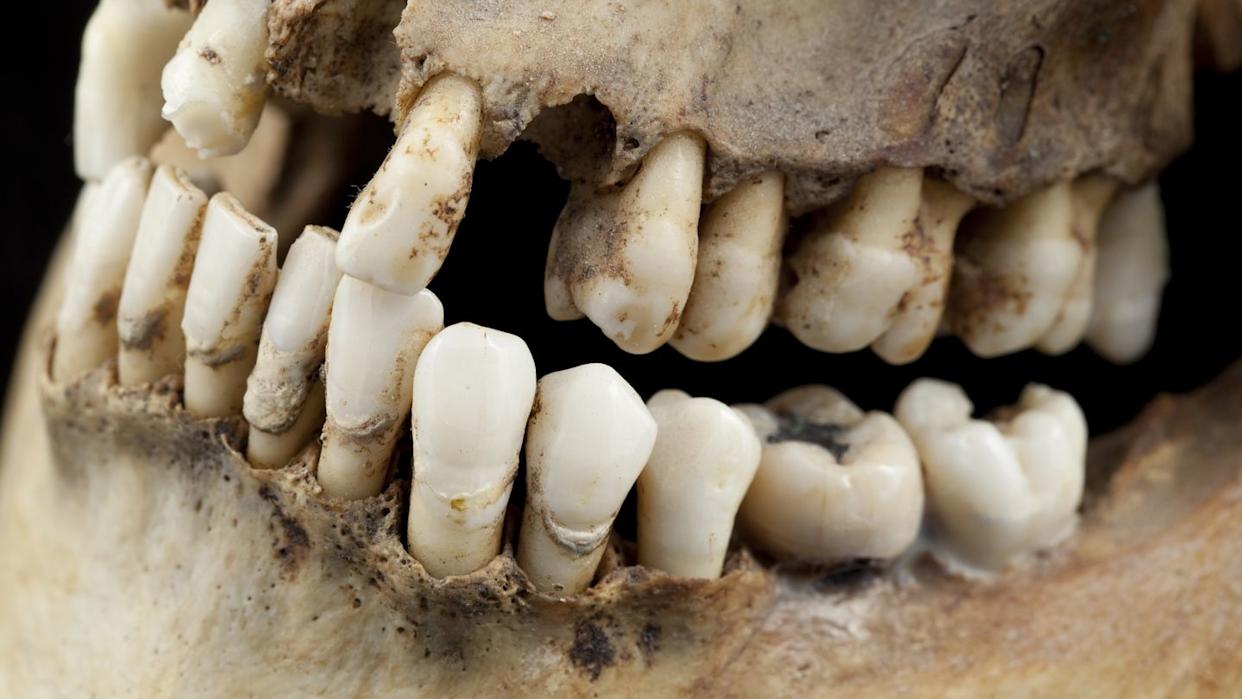“Hearst Magazines and Yahoo may earn commission or revenue on some items through these links.”
This story is a collaboration with Biography.com
Bodies voluntarily chained to rocks. Acts of self-flagellation. Living beings reduced only to skin and bones through consenting abstinence from food consumption.
Asceticism in Christianity as practiced for centuries can comprise an array of devotional practices from fasting to meditation. But it’s this more extreme form of asceticism, first documented in the second century, that has held a lurid fascination with the public, both within and outside of the Christian faith. Though these acts of extreme deprivation and self-harm were condemned by Church figures like Saint Barsanuphius and John the Prophet, radical acts like Simeon Stylites’ 36 years atop a pillar have been immortalized in works as far ranging as a poem by Alfred, Lord Tennyson and a 1965 film by the Mexican director Luis Bunuel. In the 21st century, this fascination with extreme asceticism re-emerged in the public consciousness through the character of Silas, the self-flagellating monk in the thriller novel The Da Vinci Code.
But while these pop culture depictions of “ecstatic suffering” vary in style and genre, one thing remains consistent: the practitioners depicted are always male. “Only men performed self-punishment in the Byzantine period,” a recent Haaretz article notes of the general assumption made by historians. “Ecstatic suffering was the fief of the exalted male.”
But that assumption has been drastically shaken, after an article published in the Journal of Archaeological Science provides “the first solid evidence that women in early Christendom also engaged in self-punishment.”
The evidence in question was found within a Byzantine monastery near the Old City of Jerusalem, which likely existed from 350 to 650 A.D. Within the two crypts therein, archaeologists were able to categorize many of the bodies as men, women, and children. But one had been so damaged by tree roots and other degradation that the so-called “diagnostic bones,” primarily the pelvis, were indecipherable. What was evident about it, however, was that these remains had belonged to a practitioner of a particularly extreme form of asceticism, as the bones had been wrapped in chains.
With only “only three vertebrae and a tooth” available to them, and roughly 1,600 years elapsing since the initial burial, the idea of extracting and analyzing DNA in order to identify the biological sex of the figure formerly wrapped in chains was off the table. But, remarkably, a different kind of analysis had previously been pioneered by Dr. Paula Kotli and their team for the purposes of studying ancient animal domestication.
“In animaldom, Kotli and others developed a methodology to sex ancient remains based on a protein in dental enamel, amelogenin, which differs slightly between males and females,” Haaretz summarizes. “It was the first time the sex of ancient cattle remains had been elucidated, enabling researchers to explore the domestication pathway through changes in herd management.”
This analysis hinges on the fact that, as Dr. Kotli explained, “we humans have two copies of the amelogenin gene: one on the X chromosome and one on the Y.” Those with two X-chromosomes would only have the X-linked amelogenin. But the presence of a Y-linked amelogenin means the tooth in question was in the mouth of a biological male.
When the tooth of this chain-bound ascetic was subjected to analysis, there was no Y-linked amelogenin present, which highly suggests the tooth’s owner had been female.
We say “highly suggests” because there is some wiggle room here. “The absence of an AmelY unique spectra enabled us to classify the remains as very probably those of a female,” is what the paper concludes. Since men have both the X- and Y-chromosomes, it’s possible this tooth at one time had a Y-linked amelogenin, which simply didn’t survive as well and wasn’t discovered in the analysis.
But without expressing absolute certainty, the team appears fairly confident that the likely owner was a female. This discovery offers a new insight into ancient devotional practices, and broadens our understanding of the spectrum of early Christian worship, not just in terms of what was practiced, but who was permitted to practice it.
You Might Also Like
Yahoo News – Latest News & Headlines
Read the full article .


